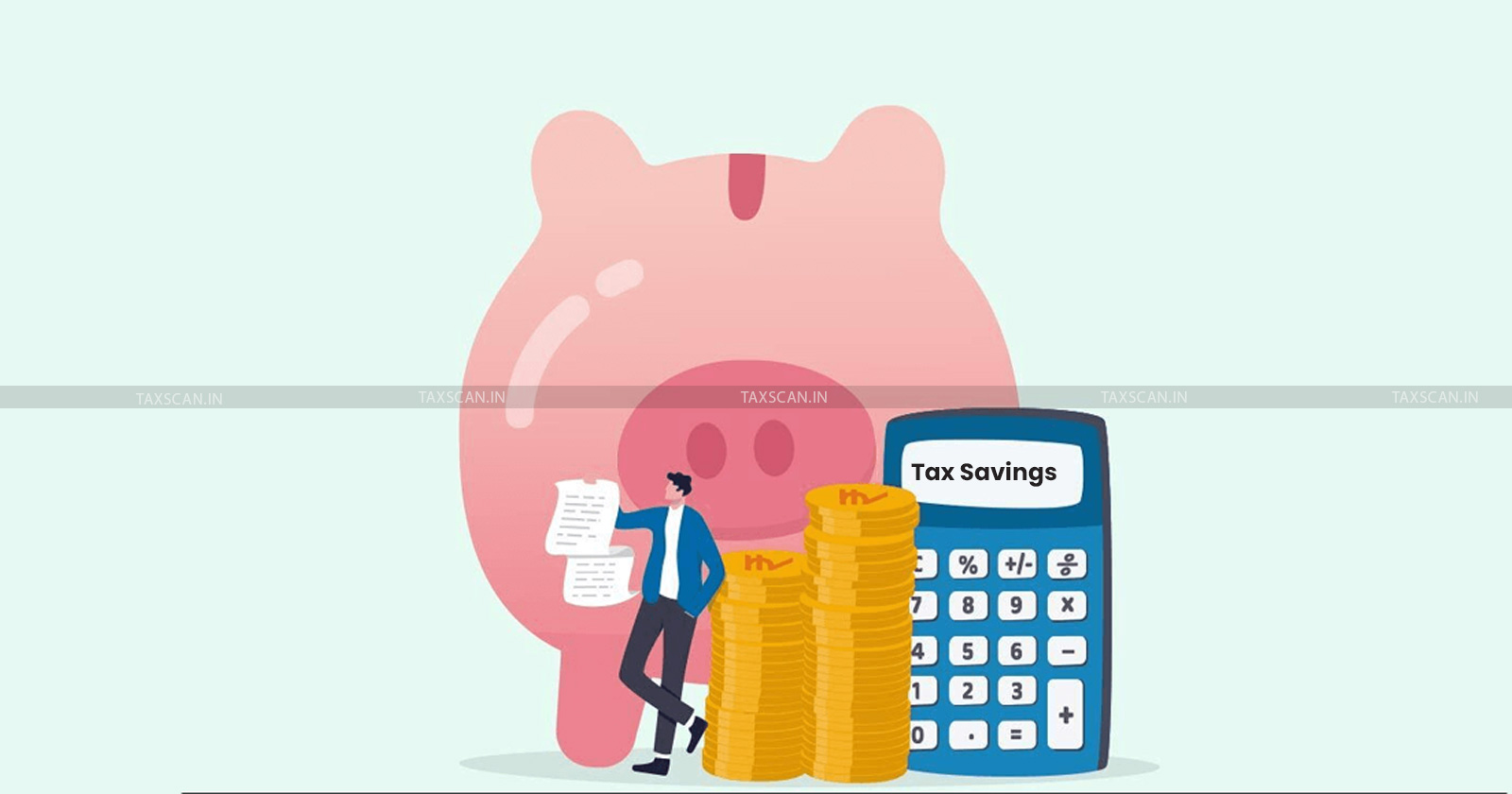Maximizing Tax Savings: A Detailed Guide to HRA, LTA, and Other Exemptions for Salaried Employees
Evaluating both options annually, considering changes in income or life circumstances, and staying updated on policy changes like those introduced in the 2025 Union Budget can help ensure that we are always making the most tax-efficient choice.

Tax – Savings – maximizing – TAXSCAN
Tax – Savings – maximizing – TAXSCAN
Every rupee saved in taxes is a rupee earned. For salaried employees across India, understanding the intricacies of tax exemptions can mean the difference between a hefty tax bill and significant savings. Let's break down the complex world of tax planning into simple, actionable strategies that work for salaried employees.
In India, the income tax framework allows for various deductions and exemptions that can significantly reduce the overall tax burden. Among the most beneficial of these are the House Rent Allowance (HRA), Leave Travel Allowance (LTA), and several other exemptions provided under the Income Tax Act. However, since the government introduced the New Tax Regime and further modified it in the 2025 Union Budget, the choice between the two regimes has become more crucial than ever. Making an informed decision between the old and the new regime can result in significant financial advantages depending on your income structure, expenses, and investment behavior.
GST Smart Guide Click here
Understanding the Old vs. New Tax Regime
India’s dual income tax system allows taxpayers to choose between the old and the new tax regimes. The Old Tax Regime follows a higher tax rate structure but compensates with a range of exemptions and deductions such as those under Sections 80C, 80D, 24B for home loan interest, HRA, LTA, and many more. It benefits those who make considerable investments and have claimable expenses. The New Tax Regime, on the other hand, offers lower tax rates but sacrifices the majority of deductions and exemptions. It simplifies the tax process, particularly for those who prefer not to engage deeply in tax planning or have minimal deductible expenses.
Old Tax Regime Slabs (FY 2025-26)
Under the Old Tax Regime for the financial year 2025–26, income up to Rs. 2.5 lakh remains exempt from tax. Any income between Rs. 2.5 lakh and Rs. 5 lakh attracts a 5% tax rate. Earnings between Rs. 5 lakh and Rs. 10 lakh are taxed at 20%, and income above Rs. 10 lakh is taxed at the highest slab of 30%. This system, although seemingly more expensive due to higher rates, allows for comprehensive deductions which, when availed optimally, can bring down the effective tax liability significantly.
Comprehensive Guide to Reverse Charge under GST Click here
New Tax Regime Slabs (FY 2025-26)
The New Tax Regime introduced a significantly different structure. As per the updates made in Budget 2025, income up to Rs. 2.5 lakh is still not taxed, but the revised structure ensures that no tax is payable up to Rs. 4 lakh owing to the basic exemption and rebate adjustments. Between Rs. 5 lakh and Rs. 10 lakh, a lower tax rate of 10% applies. The same 10% rate continues until Rs. 12 lakh, beyond which the rates increase to 15% for income up to Rs. 16 lakh, 20% up to Rs. 20 lakh, 25% up to Rs. 24 lakh, and 30% beyond that. The intent behind this structure is to simplify the compliance process for taxpayers while still providing meaningful relief through lower tax rates.
Key Changes in the New Tax Regime (Budget 2025)
The 2025 Union Budget introduced pivotal changes to the New Tax Regime in an effort to make it the default and more attractive choice. One of the biggest shifts was the increase in the tax rebate threshold, which now makes income up to Rs. 12.75 lakh effectively tax-free for those opting into the new structure. The standard deduction of Rs. 75,000, although the only deduction available under the regime, offers basic relief. However, all other traditional exemptions like HRA, LTA, Section 80C deductions for investments, and health insurance under Section 80D are unavailable. This change indicates a clear shift toward simplifying tax filing, reducing documentation, and eliminating the need for taxpayers to prove eligibility for multiple deductions.
GST on Services Ready Reckoner Click here
Advantages of the Old Tax Regime
Despite the allure of lower tax rates in the new system, the Old Tax Regime continues to serve as a robust framework for taxpayers who are willing to plan their finances. It provides ample scope to reduce taxable income through strategic investments and expenses. Taxpayers can invest in instruments under Section 80C like Public Provident Fund (PPF), Employees' Provident Fund (EPF), Life Insurance Premiums, Equity Linked Savings Schemes (ELSS), and others to claim deductions of up to Rs. 1.5 lakh. Renters can reduce taxable income by claiming HRA, provided proper documentation like rent receipts and lease agreements are in place. Additionally, health insurance premiums qualify for deductions under Section 80D, and interest payments on home loans are deductible under Section 24B. With well-structured planning, taxpayers in the old regime can bring their effective tax rate significantly down, making it a favorable option for those with applicable expenses and investments.
Advantages of the New Tax Regime
The New Tax Regime is designed for simplicity and is most beneficial to taxpayers who do not have substantial investments or deductible expenses. The reduced tax rates offer financial relief without the burden of maintaining extensive documentation. Employees who do not pay rent, do not have ongoing loans, or have not made significant investments can avoid the complexities of traditional tax-saving measures while still enjoying lower tax rates. Since only a standard deduction of Rs. 75,000 is available, this regime is ideal for those who prioritize convenience over comprehensive tax savings.
GST Manual (Acts & Rules) Click here
How to Maximize Tax Savings
Maximizing tax savings under the Old Tax Regime requires a strategic approach to investments and expenditures. One can start by investing fully under Section 80C, taking advantage of schemes like PPF, EPF, ELSS, National Savings Certificate (NSC), and life insurance. Salaried individuals should ensure they claim HRA properly by maintaining rent receipts and necessary documents. For those with health insurance, the premium paid for self and family is deductible under Section 80D. Homeowners can benefit from deductions on home loan interest under Section 24B. These deductions, when combined, can substantially reduce taxable income, sometimes even pushing the individual into a lower tax bracket. Conversely, under the New Tax Regime, tax planning is minimal. The focus here is on earning efficiently and ensuring that income does not exceed Rs. 12.75 lakh, beyond which the tax burden begins to rise despite the lower rates.
Who Should Choose Which Tax Regime?
Choosing the right tax regime depends largely on your income structure and the type of expenses or investments you incur. If your financial profile includes regular rent payments, investments under Section 80C, health insurance premiums, and home loan interest, the Old Tax Regime can be far more beneficial in terms of tax savings. However, if you are a young professional, a gig worker, or a freelancer with limited investments and no major tax-saving expenses, the New Tax Regime is not only easier to navigate but could also save you more in absolute terms due to its reduced rates. Salaried employees who have access to HRA and are repaying loans may want to stick with the old regime, while self-employed individuals with low overheads and minimal tax-saving instruments might find the new regime more suited to their needs.
Reverse Charge Mechanism under GST Click here
Conclusion: Which Tax Regime is Best for You?
Ultimately, the choice between the Old and New Tax Regime must be made after a detailed assessment of one's income, expenditures, and financial goals. The Old Tax Regime rewards those who engage in structured tax planning through investments and allowable deductions, and can be particularly beneficial for families and individuals with higher financial obligations. The New Tax Regime, on the other hand, appeals to individuals seeking hassle-free compliance and is especially useful for those without substantial deductible expenses. Evaluating both options annually, considering changes in income or life circumstances, and staying updated on policy changes like those introduced in the 2025 Union Budget can help ensure that we are always making the most tax-efficient choice.
Support our journalism by subscribing to Taxscanpremium. Follow us on Telegram for quick updates


